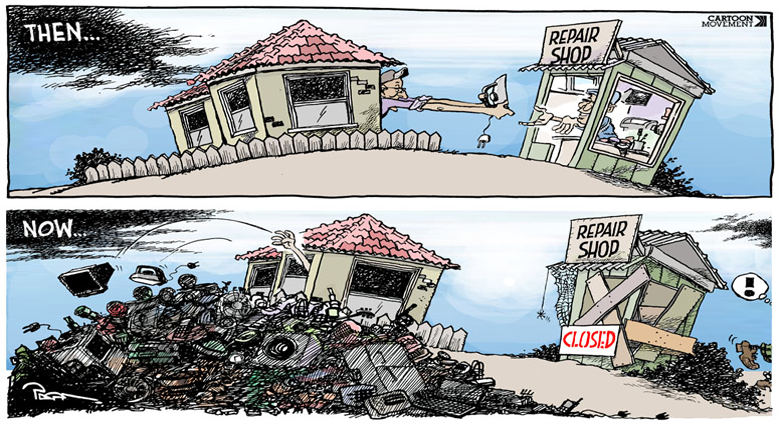Many people think so. Several organizations are leading the way for female development programs because of a perceived need to bring women along a different path than men when it comes to fostering leadership. Programs encourage women to be more aggressive in pursuing leadership opportunities and to work harder to raise their profiles as prospective leaders. Much of that leadership development has value—to a point.
Do we need to treat men and women differently as we develop them into leaders?
The fact is there are no special gender rules for good leadership. In other words, organizations and employees want good leadership regardless of whether the leader is a man or a woman. The unresolved question is whether we need to treat men and women differently as we develop them into leaders?
The barriers for female leaders are still very much in place. The senior ranks in most organizations continue to be dominated by men, making it difficult for women to break through or even to be seen as leadership material. If gender balance has been identified as a priority, men are still more likely to encourage and mentor other men to take on leadership roles.
In some instances, women themselves continue to be their own worst enemies. Although women are generally better at collaborating and building communities within large organizations, we often see that they lack the confidence to network on their own behalf, upward in the hierarchy or build the relationships that can translate into leadership opportunities. Men tend to “own” their successes and use them as springboards for advancement; women are still more likely to share the credit for success, rather than take the spotlight, therefore missing the leadership opportunities that normally come with success.
While men seem to automatically seek leadership at the first chance, women are more likely to decline leadership opportunities out of a fear they do not have the relevant experience or skills, or whether they want to take the job on period. Men see office politics as a necessary evil; women think office politics are “dirty” and tend to steer clear. Women are still more likely to be perceived as not “tough enough” to be leaders, even if they display all of the best practices of effective leadership.
Do these realities require a separate stream of leadership training for women? We believe they do and here’s why. Having worked with hundreds of female leaders worldwide, the same challenges arise time and time again. Although the expected skill set of a good leader is gender neutral, women still need some specific attention when it comes to positioning themselves for leadership opportunities. Women also need a different type of support toward their development.
Women need a different type of support toward their development.
Whether introducing a program for high potential females targeted for progression into senior ranks, or a broad based program for females throughout the organization, keep these ten tactics in mind:
- Focus on mindset. Leadership is intentional. Focused. Deliberate. For females this means delving into some deep reflection around where I’ve come from, where I can go, and what’s holding me back. The biggest barrier tends to be the mindset shift required to get there – not the skills. When programs focus on mindset shift, the most cited outcomes are confidence and fire to succeed.
- Link content to leadership skills that matter. Any program targeted at females should have content that is tied to the leadership competencies organizations require for success in the future. For high potential programs it is critical to include components that stretch the business, financial and strategic acumen to progress into more senior roles.
- Pay attention to resilience. Females get trapped in taking on too much, delegating insufficiently, and believing they actually can accomplish everything on the ‘to do’ list. Add to this the primary role most have in running the home and you have a recipe for disaster. The impact takes its toll on themselves and their teams. Many women have described themselves as ‘just hanging on to the cliff’; while others said their teams have intervened or expressed a desire not to go into management if what they observe is what it takes. Supportive dialogue needs to happen around resilience and mental health, creating boundaries, and how to say the ‘strategic no’.
- Provide ongoing community support. With most programs women begin by wondering why they need to be in a separate program; some even come in kicking and screaming. Then something shifts. There is a palpable difference when a group of women come together. The connection grows quickly and the support for individual and collective success is strong. We know women are wired for community, so it’s important to keep it going through peer group coaching. Most participants say that the network and community they build after the program is the most valuable investment of their time.
- Bring in role models. Females crave hearing from senior women in their own organizations who are vulnerable and provide messages about their own successes and struggles. Source and prepare a few female senior speakers who can inspire participants from a place of authenticity.
- Require coaches who have been there. Whether run in house or with a partner, these programs are much more than training. The program leader must be more than a trainer or facilitator. They are a coach, and a trusted advisor who is guiding women through a journey. Participants want to hear the stories of how they too were challenged, how they rose above and achieved success. The best program leaders are role models.
- Anchor in one-on-one coaching. Especially for high potential programs or senior female leaders, one-on-one leadership coaching is a priceless investment for females to accelerate progress on goals. It also provides the objective support system to keep accountability for embedding new mindsets and behaviors ongoing.
- Have sponsors present. Ensure that you have visible male sponsorship for the program. This can include kick-offs, wrap ups and networking dinners around the program. In one organization several women scheduled post program meetings with the senior male leader of the region and confessed that they were ready to resign prior to the program being launched. They were now reengaged, reenergized, and ready to carve out a future for themselves with a sense of confidence and control.
- Pay it forward. Females have a strong desire (and feel it’s their duty) to ensure that the experiences, skills and connections they reap from development programs are passed on. Whether formally or informally ensure to provide time and mechanisms for females to pay it forward throughout the organization.
- Be careful what you ask for. When highly capable females with potential feel emboldened with a renewed sense of confidence and drive, they will seek opportunities for advancement. Some of these opportunities may come from the organization they are employed, while some will leave to find progression elsewhere. Be sure to stay close to high potential females and provide the projects, experiences and roles to support their desired progression, or they will find it elsewhere.
All leaders have to go through a process of figuring out who they are and what they want to achieve in their organizations. That said there is a need for some specific encouragement at the outset of leadership development to pull in the best female candidates. Essentially programs need to target the leadership competencies important for all leaders to develop while providing the one-on-one and peer community support that addresses the specific challenges women tend to face.
That doesn’t make the rules for leadership different for men and women. It does, however, recognize the challenges that must be conquered to help establish a new generation of female leaders who will, just by their presence, encourage others to follow in their footsteps.





.png)
%20(1).png)


.jpg)
What Did You Think?